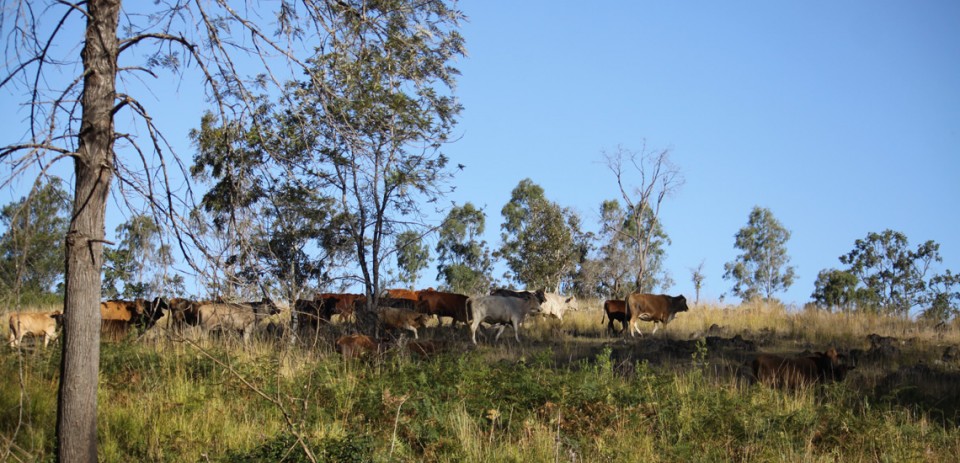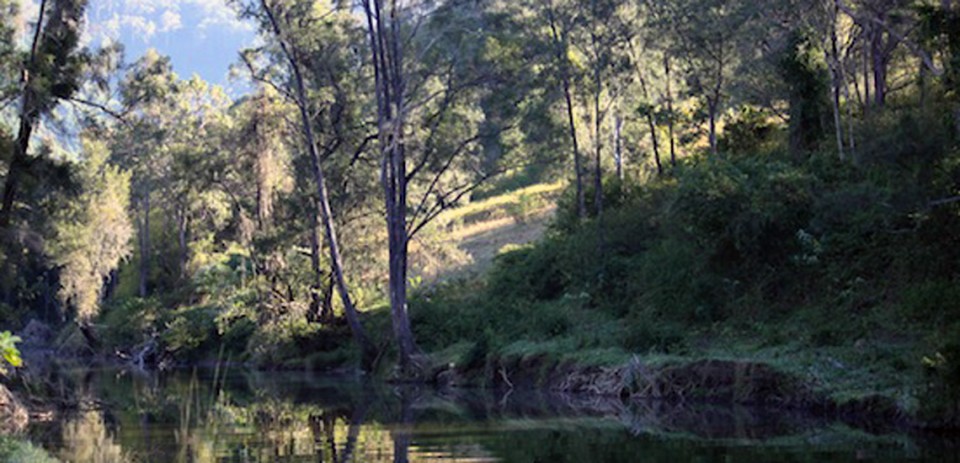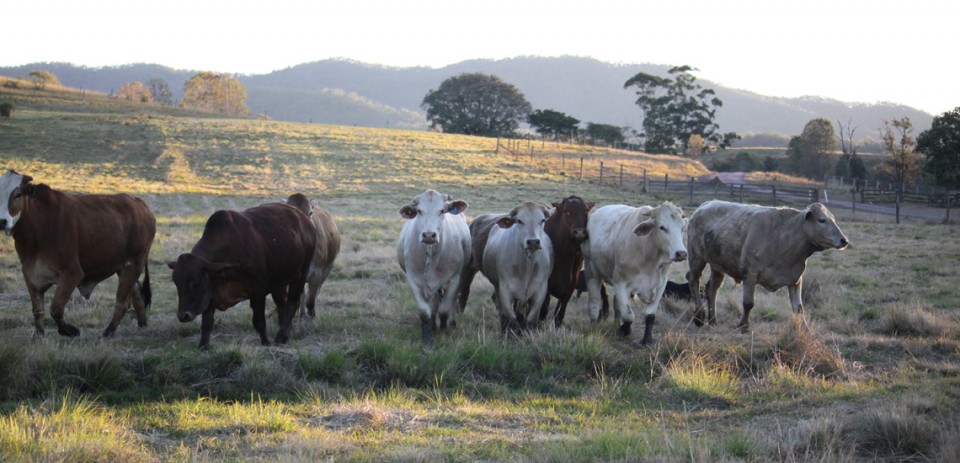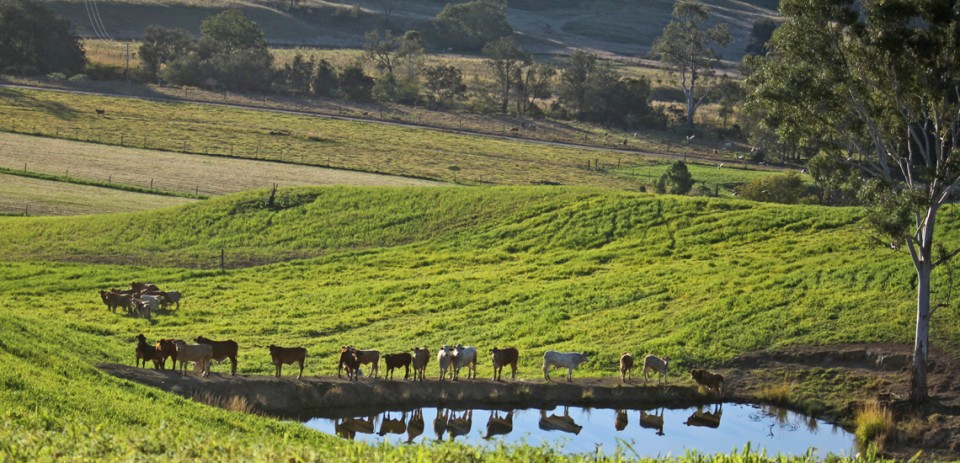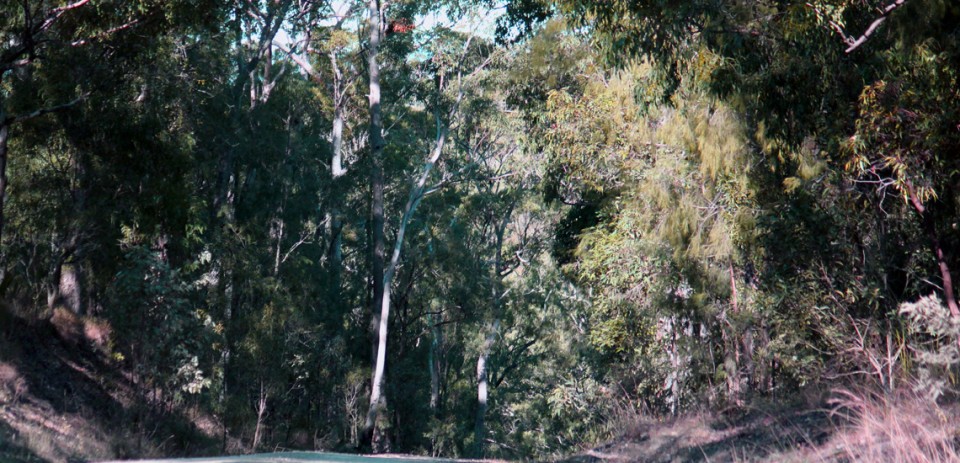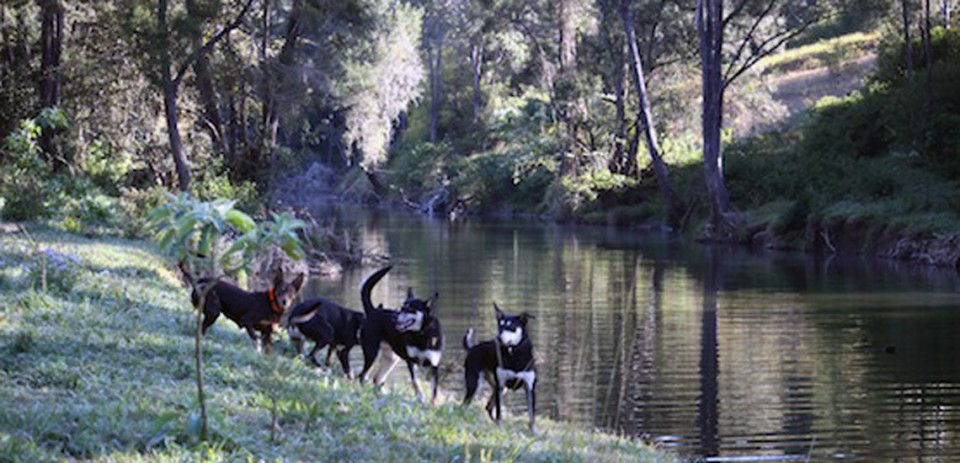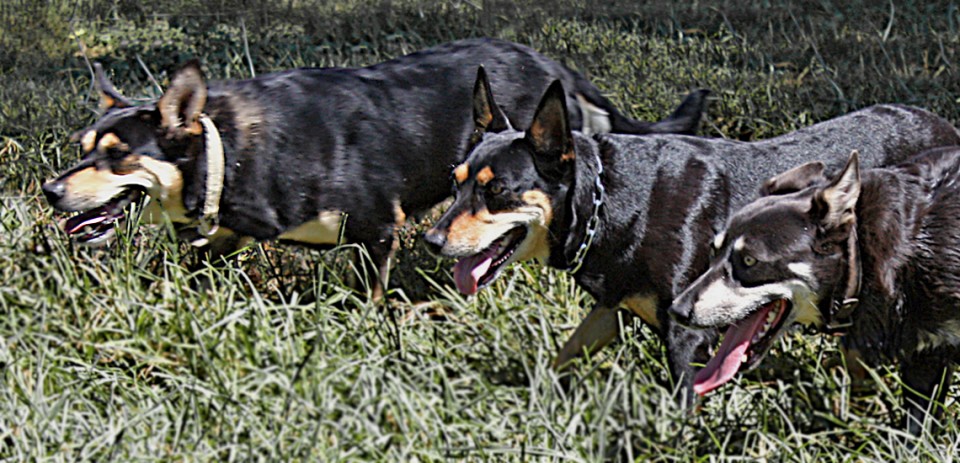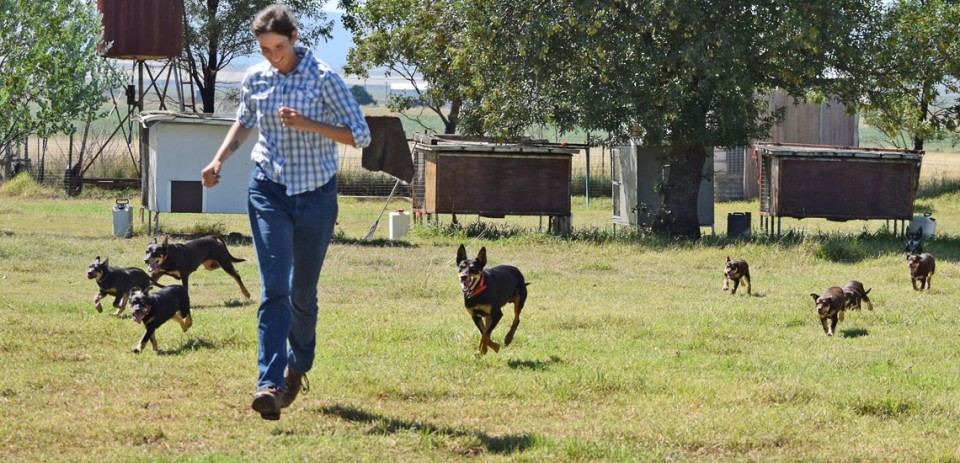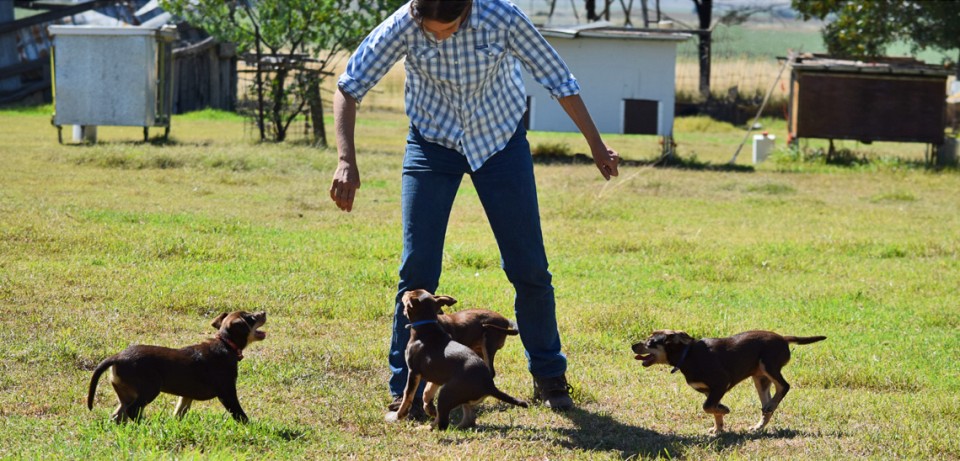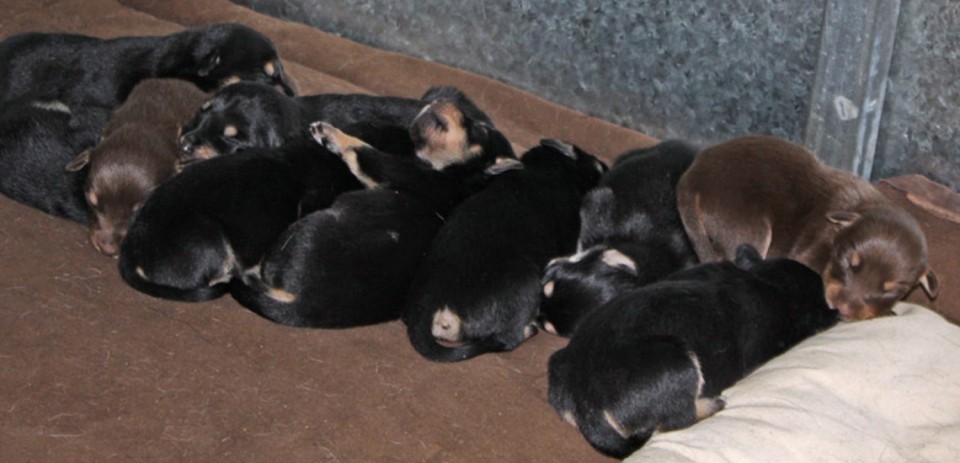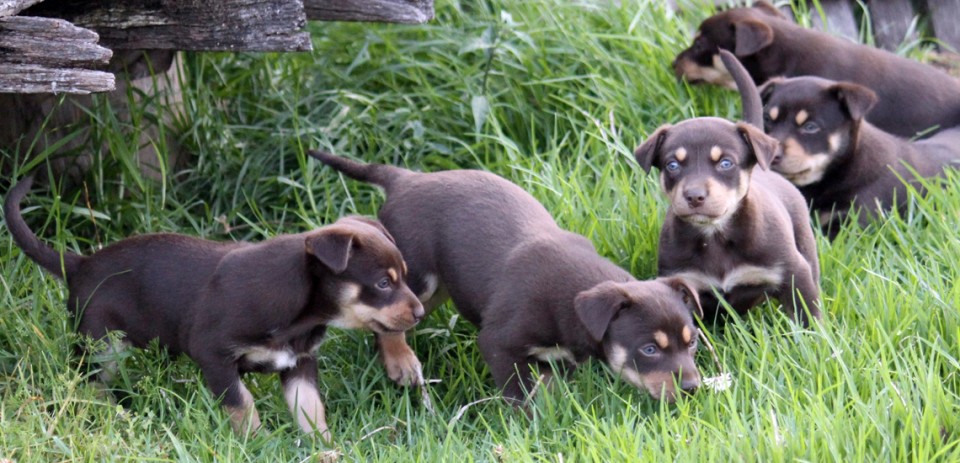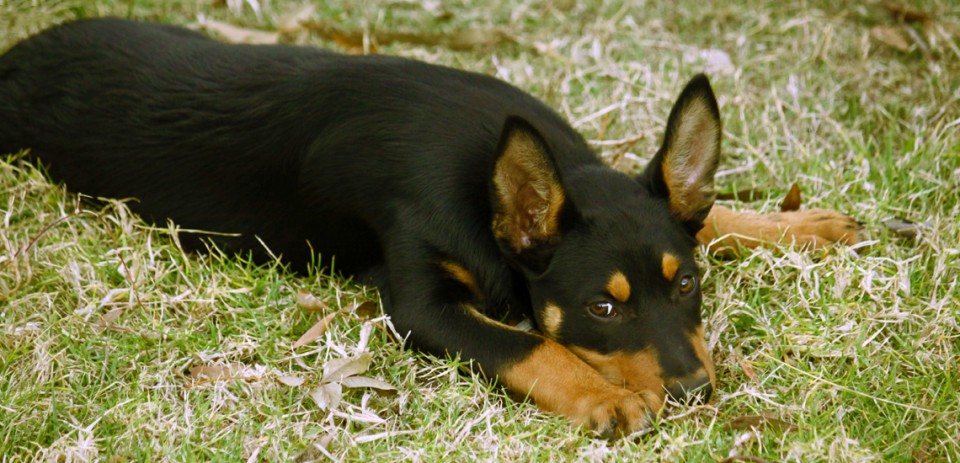The Stud
Karmala Kelpies are bred from old bloodlines concentrating on clever mustering dogs, and I have gone to considerable effort to source sires who have worked in difficult country where brains and stamina are essential. This would have been so much harder without the unfailing generosity of David Hart, Tracker Kelpies, who was kind enough to make his sires available. His dogs have worked some of the most difficult country in Australia and any who lived up to his high standards are certainly worth consideration; I have benefited greatly from his experience with various lines of dogs. We both, coincidentally, began breeding along much the same lines over a decade ago. I have also benefited from the generosity of Matt Larkings, who lent me his two old Scanlon bred dogs Chopper and Wilson; their legacy has been valuable and only improved my old lines.Of later years I am grateful for the help of other breeders who have also kept lines of smart mustering types: Grant Hutchings, Lynnton Martin, Sean and Evonne Barrett, Rodney Garrett, Cody Glendinning ….unsurprisingly we have all used dogs at various times from similar lines.
At Karmala emphasis is put on a friendly, calm temperament, natural working ability and sufficient strength. The dogs are of good type, fed a raw diet for future soundness, and bred carefully to avoid known health problems as much as possible. The stud has been based in Queensland for twenty years. With the cooperation of other Kelpie breeders I hope to preserve those traits that originally made the breed such an invaluable asset and leave behind some good Karmala dogs that pop up in pedigrees for many years to come!
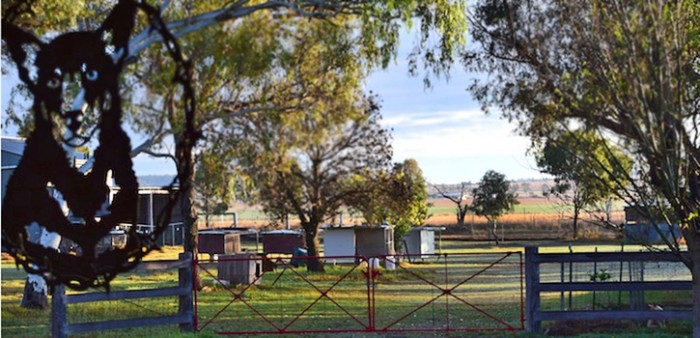 The raised kennels are moved around to catch morning sun in winter, and summer shade. A big treed run where the dogs spend their days is below the kennels. Pups are raised in grassed yards. Photo taken from my deck.
The raised kennels are moved around to catch morning sun in winter, and summer shade. A big treed run where the dogs spend their days is below the kennels. Pups are raised in grassed yards. Photo taken from my deck.
2023 A few thoughts on recent matings and the breed’s future.
So over 20 years on I’m circling back to old Karrawarra Rip III, it seems…. Thunder’s g’sire on both sides (and Joaker is also by Thunder). It’s funny that Sheps Sandy also has common g’sires in Campbell’s Reg, and Elwanvale Sunny in Wickham’s Tex. Carrying that back to the Sandy pup we bought, her sire has common g’dams in Karra.Lisa II who was by Coster( x Karmala Akubra, who was not the strongest, his son Brock is a much better dog). Tony Parsons took me to see Coster one day and he dived into his kennel when he saw me and wouldn’t come out. This is the sort of thing I had no idea about when I started breeding kelpies and “idolised” some of the old dogs, but as you get older and maybe a little wiser, you try learn about the dogs in your pedigrees like all good breeders trying to progress. I asked Tony if he’d like to mate a different bitch to Brock or Akubra but he was in love with Coster, despite not liking a dog in his dam’s pedigree. As I look back with the benefit of hindsight all I can do is wonder why some matings were done, some of mine included.Maybe this close breeding will cut out the in-between step when outcrossing; generally speaking the best results are from the next generation of 25% of introduced blood but this sort of “double dipping”, let’s call it, can have unexpected results, concentrating unexpected traits and not always the ones you wish for. Interesting! Well, maybe only to those interested in bloodlines and they seem to be getting pretty thin on the ground these days.
The kelpie has a relatively small genetic base and this mating of ‘1/2 siblings’ is not good for the breed long term because it reduces that small base even more. At least the WKC has an open stud book and unregistered dogs can be introduced through the Appendix system. This was a great idea, and has saved the contribution that a lot of good dogs have made which would not have been possible otherwise. The main problem these days is the proliferation of studs and thus preference for WKC registered dogs, which is reducing the variation and breadth of the genetic base considerably. Most people aren’t too concerned about bloodlines and tend to stick to dogs they like and own, dogs that are winning trials, or dogs with trendy prefixes! I must admit I wonder about some of the proposed matings I see with pedigrees on Facebook, but it’s a great free service which the breeders are very fortunate to have.
There are many disadvantages in breeding close, evidenced by the “pure” breeds registered with the Kennel Clubs worldwide and the reduction of their breed numbers for various reasons, including the pressure from animal welfare groups and ‘greenies’. They are reaping the result of closed stud books and over use of “superior” sires both breed-wide and also within a kennel/stud which further reduces genetic diversity. The Australian Kelpie is included. Their numbers are getting very low and restrictions regarding the number of litters allowed per bitch are making it a lot worse for all breeders. I prefer not to do close matings myself, but was restricted as to choice when trying to avoid those lines that carried CA until a test was devised. Since then I’ve tested a few prospective sires with their owner’s permission and the results have been surprising. All our bitches and sires have tested clear due to diligence and knowledge of carrier lines. Some results of close breeding can be: reduced fertility, lower functioning immune systems, smaller animals with physical defects, and the surfacing of recessive genes e.g. Cerebellar Atrophy(CA).
e.g. I’m dealing with a pup from this sort of mating at present. His maternal and paternal g’sire was a nice dog on 3 sheep and obviously it was thought those qualities would be even better if he was doubled up. It’s tempting to breed compliant, obedient dogs to trial but can reduce self confidence and ‘work ethic’. This pup had no idea of “sticking up for himself” when a little pup and just copped being attacked by an older sibling until he had scars all over his head. When he went to Arthur for training he looked great on his weaners for a short time, but when asked to go around on his non-preferred direction he flew in and bit. When reprimanded, voice only, he lay down and ‘sulked’ or kicked way out from the sheep. Arthur persisted in a round pen he couldn’t escape from and he just lay down and refused to work. He’s a lovely pup and will need good bonding and a lot of patience to be a useful worker. But…. he’ll make someone a very good mate and if not ‘told’ much he will likely work things out for himself. I brought him home early because we only keep dog pups that have the potential to make a sire. This fellow only remained so long because of being bullied; I didn’t want to sell him until I found out more about him. Luckily.
I’ve got into a lot of trouble for questioning a pedigree but you’d have to be pretty naive to believe every single registered dog was as stated, especially after breeding Merino stud sheep. That stud book used to be called “The Purple Book of Lies”! The registrar can only print the given information. My advice to any breeder is to find out as much about the dogs behind yours as possible. It will inform you regarding matings and might save some mistakes. Always be happy to “talk dogs” and remember that we all have a heap to learn….. and most importantly, there are probably dogs out there better than yours and they might even be unregistered! A number on a piece of paper doesn’t mean a thing quality wise. Frank Scanlon was very sceptical re the worth of a pedigree, but I find them invaluable now we have computer programmes such as Breeders’ Assistant which I’ve been using when planning matings for close to 18 years(guessing). David Hart did them for me for ages and Grant Hutchings has also been super helpful. I must have been very annoying! I managed to do my own for a long time but recently had computer trouble and had to annoy Grant again. He’s unfailingly helpful and patient.
